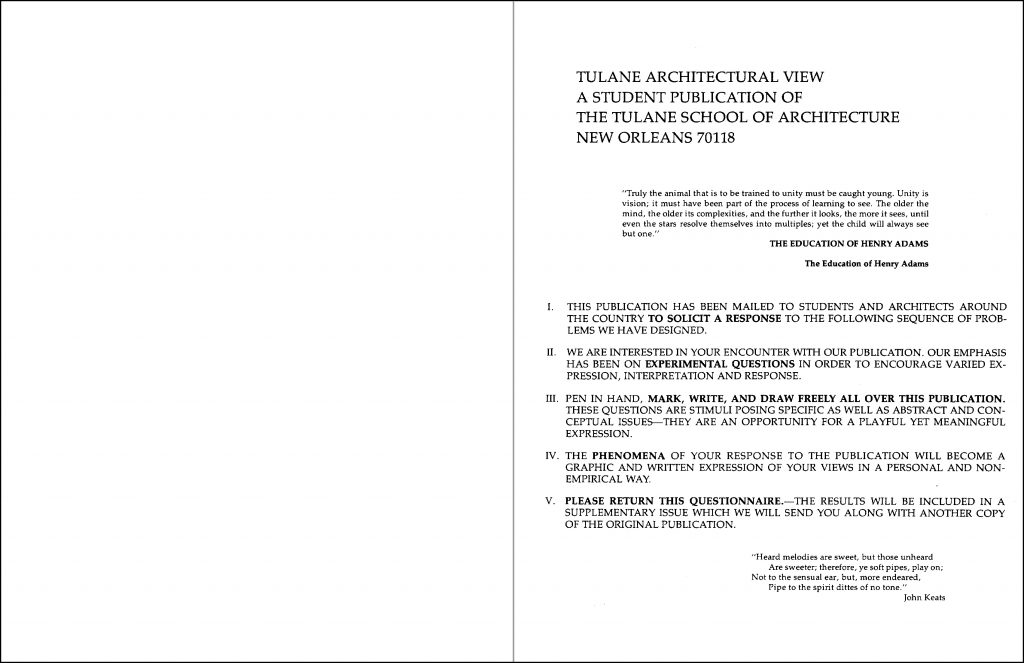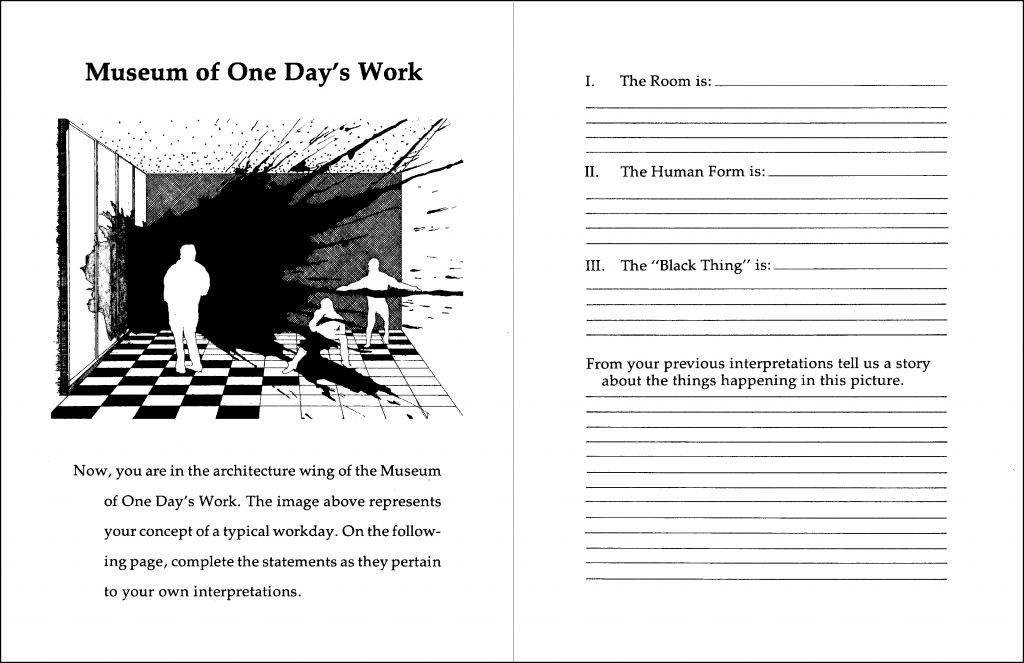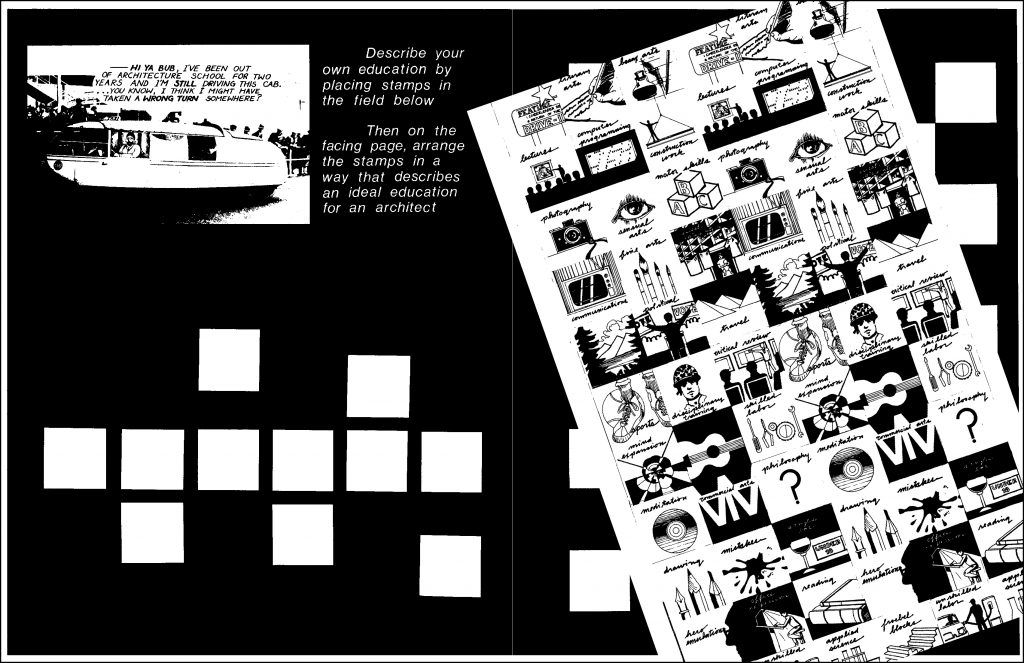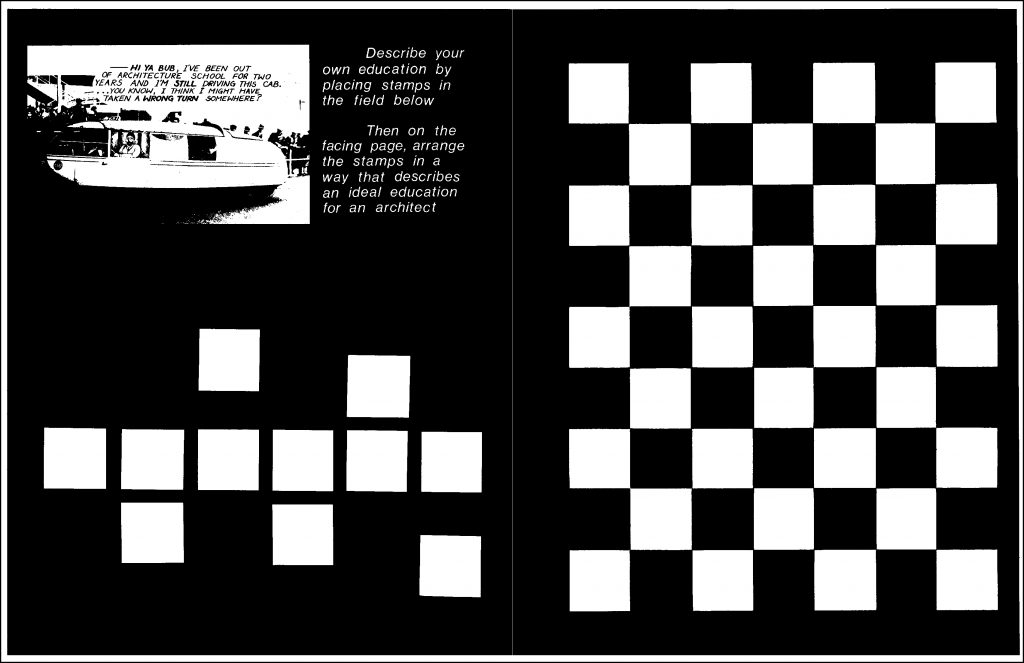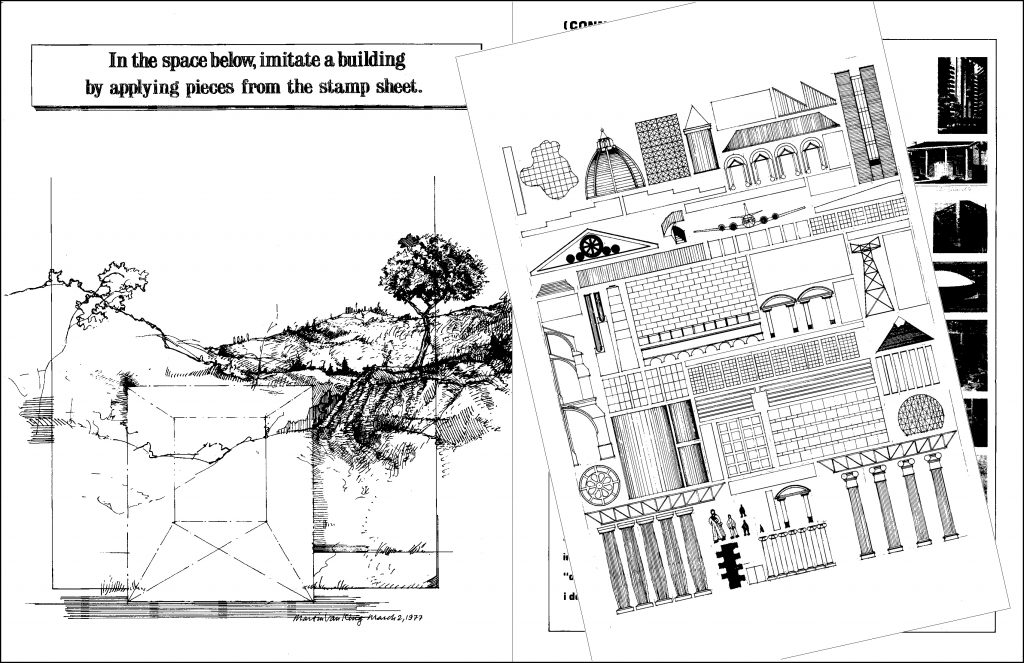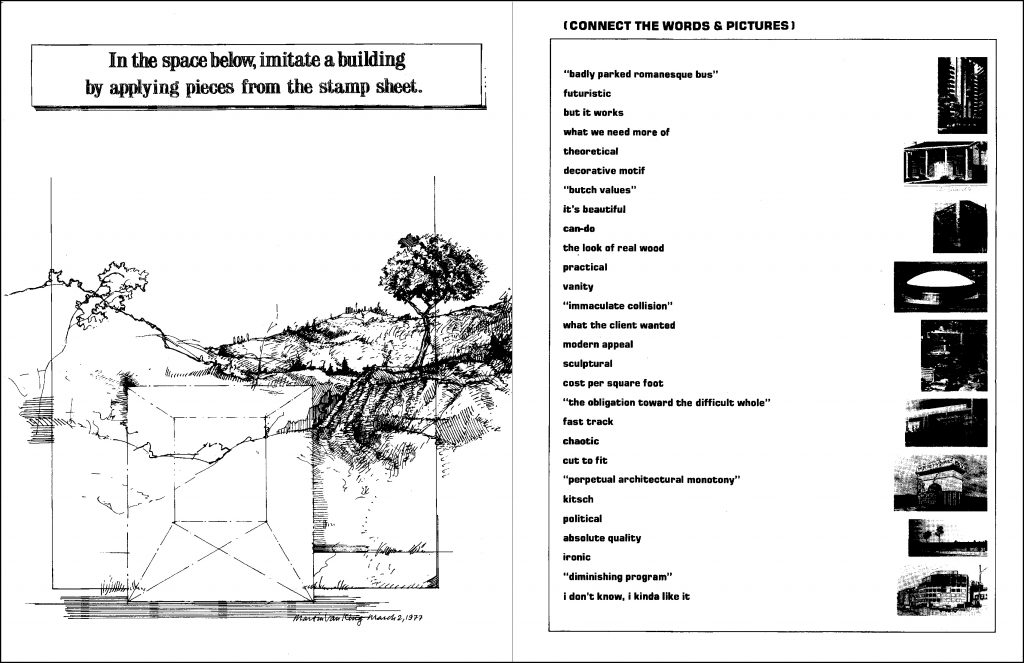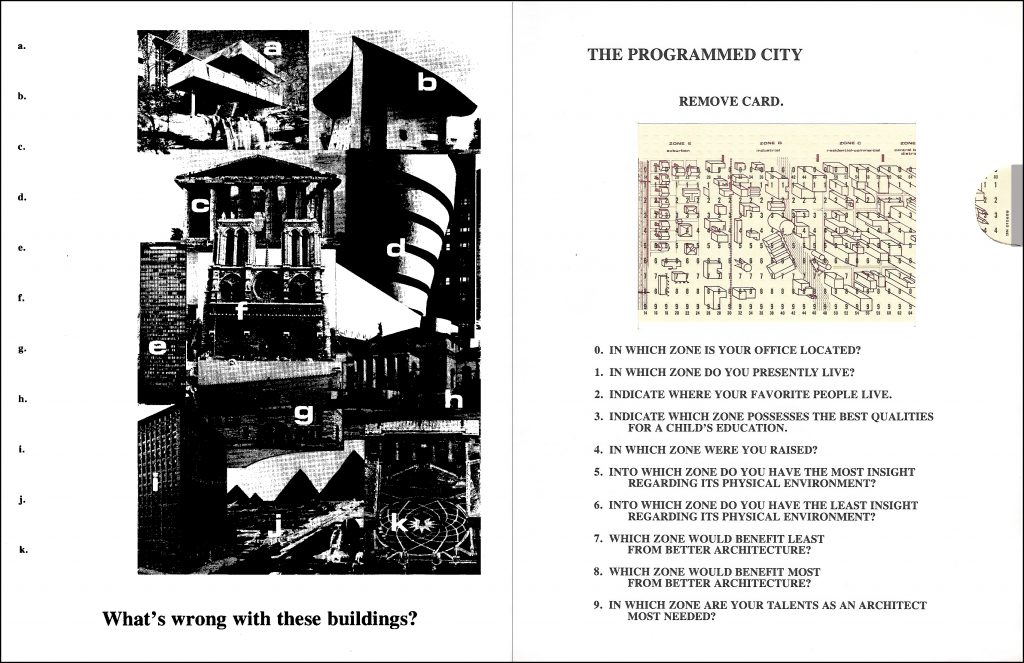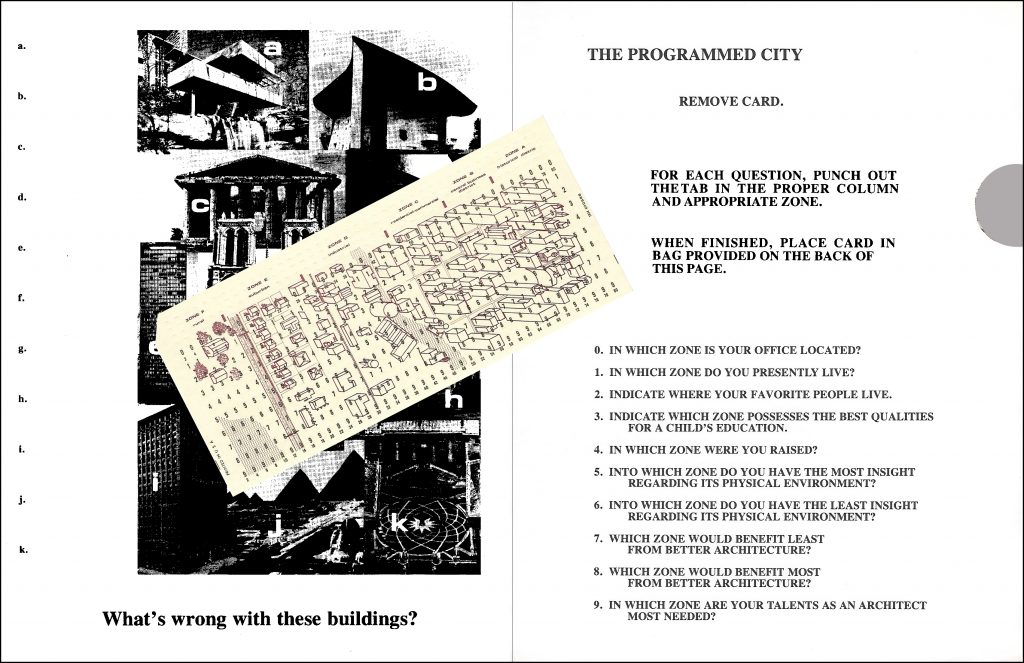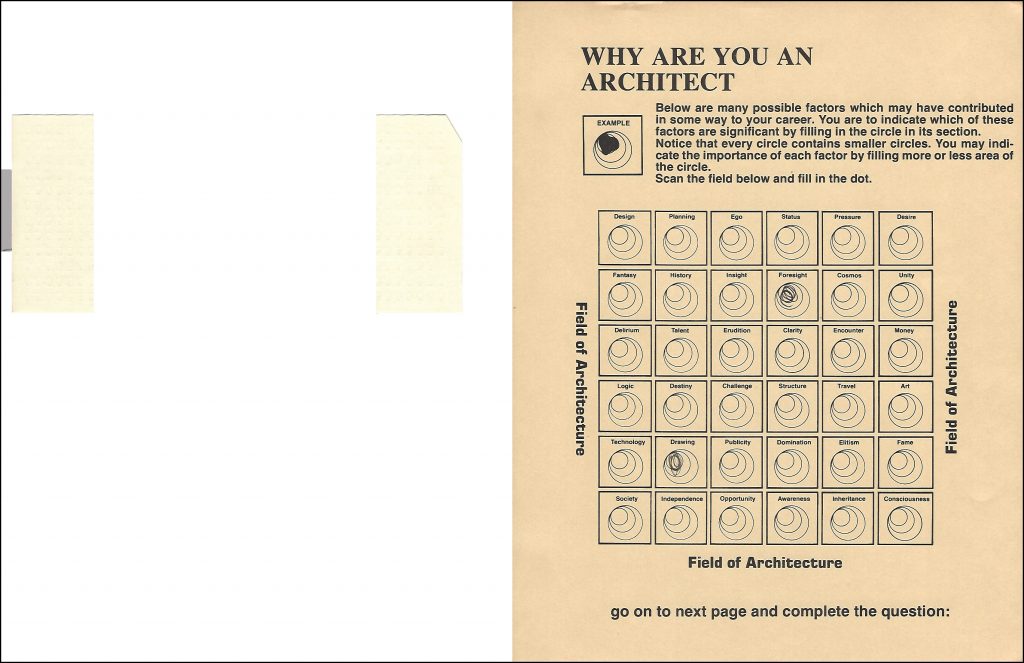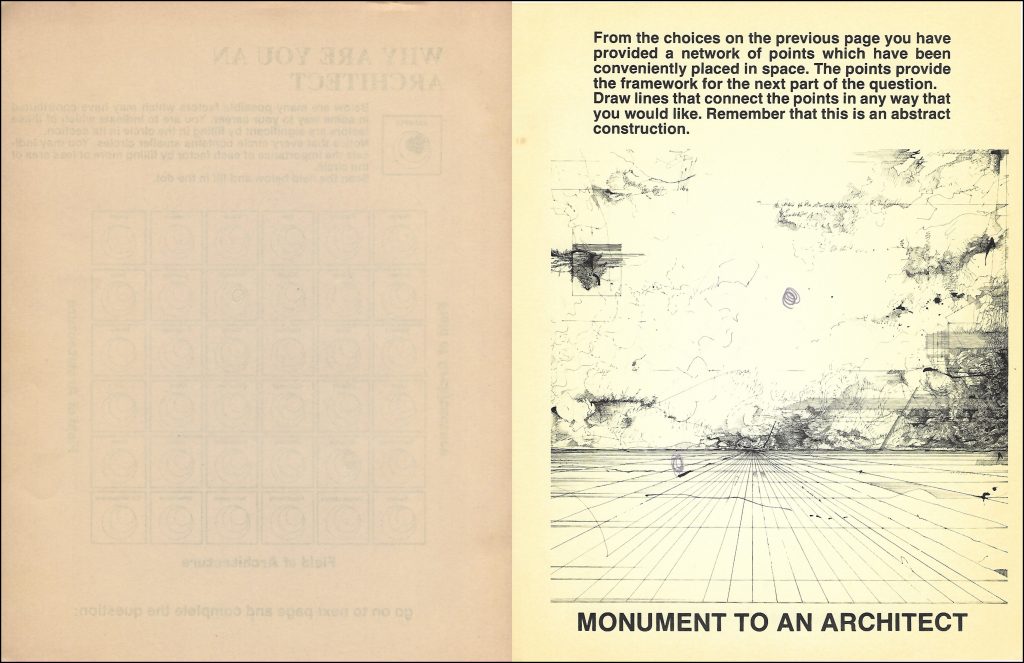The Data Issue of arcCA DIGEST republished the 1978 Tulane Architectural View, a short-lived journal of the Tulane School of Architecture. Its theme, architecture and technology, is closely related to the theme of data, and its articles, written over forty years ago, afford an illuminating historical perspective. It was also an editorial indulgence: the 1978 TAV was my first editorial gig, as co-editor with Joey Ford and Bob Innes.

The survey was mailed to architects, architectural educators, and architecture students across the country. Only three came back, and of these three only one, from a student, was completed. The second was from an architectural educator, who lambasted the exercise. The third was from Denise Scott Brown, who commended it but explained that the amount of effort her office would need to commit to doing a good job responding was beyond what they could afford. It ended up being what historian Russell Sturgis called the choir of Beauvais Cathedral: a beautiful failure.
Tim Culvahouse, FAIA, Editor, arcCA DIGEST
TULANE ARCHITECTURAL VIEW
A STUDENT PUBLICATION OF
THE TULANE SCHOOL OF ARCHITECTURE
NEW ORLEANS 70118
“Truly the animal that is to be trained to unity must be caught young. Unity is vision; it must have been part of the process of learning to see. The older the mind, the older its complexities, and the further it looks, the more it sees, until even the stars resolve themselves into multiples; yet the child will always see but one.”
The Education of Henry Adams
I. THIS PUBLICATION HAS BEEN MAILED TO STUDENTS AND ARCHITECTS AROUND THE COUNTRY TO SOLICIT A RESPONSE TO THE FOLLOWING SEQUENCE OF PROBLEMS WE HAVE DESIGNED.
II. WE ARE INTERESTED IN YOUR ENCOUNTER WITH OUR PUBLICATION. OUR EMPHASIS HAS BEEN ON EXPERIMENTAL QUESTIONS IN ORDER TO ENCOURAGE VARIED EXPRESSION, INTERPRETATION AND RESPONSE.
III. PEN IN HAND, MARK, WRITE, AND DRAW FREELY ALL OVER THIS PUBLICATION. THESE QUESTIONS ARE STIMULI POSING SPECIFIC AS WELL AS ABSTRACT AND CONCEPTUAL ISSUES—THEY ARE AN OPPORTUNITY FOR A PLAYFUL YET MEANINGFUL EXPRESSION.
IV. THE PHENOMENA OF YOUR RESPONSE TO THE PUBLICATION WILL BECOME A GRAPHIC AND WRITTEN EXPRESSION OF YOUR VIEWS IN A PERSONAL AND NONEMPIRICAL WAY.
V. PLEASE RETURN THIS QUESTIONNAIRE.—THE RESULTS WILL BE INCLUDED IN A SUPPLEMENTARY ISSUE WHICH WE WILL SEND YOU ALONG WITH ANOTHER COPY OF THE ORIGINAL PUBLICATION.
“Heard melodies are sweet, but those unheard
Are sweeter; therefore, ye soft pipes, play on;
Not to the sensual ear, but, more endeared,
Pipe to the spirit ditties of no tone.”
John Keats
Published by permission of the editors, Graham Greene, AIA, and Christopher Peragine, and the Tulane School of Architecture, Iñaki Alday, Dean.




